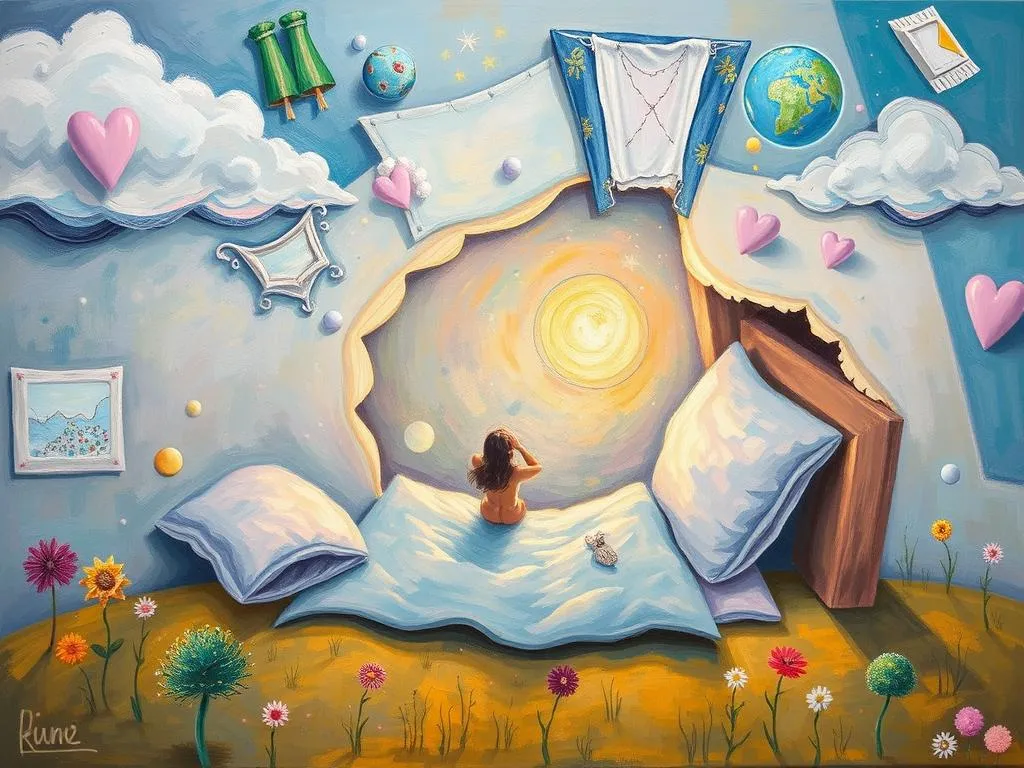
Have you ever woken up from a dream, feeling the vivid presence of someone you know—or even someone you’ve never met? Dreams have an enigmatic way of weaving together our thoughts, emotions, and experiences, often leading to profound realizations about ourselves. When we encounter people in our dreams, it can be a reflection of our subconscious mind grappling with unresolved feelings, aspirations, or connections. The imagery and narratives that unfold can serve as a portal into understanding our waking lives better.
In this article, we will explore the symbolism behind seeing someone in your dreams. We will delve into the layers of meaning that these figures hold, examine various scenarios that might occur, and ultimately guide you toward personal growth through this exploration. Whether you dream of a long-lost friend, an estranged family member, or even a celebrity, each encounter offers a unique lens through which to view your inner world.
Dream Figures: The Faces of Our Inner Landscape
When a familiar face appears in your dream, it’s not merely a coincidence. Dream figures often symbolize parts of ourselves or represent our relationships with others. Each person you see in your dreams can embody different aspects of your personality, emotions, or life situations. For instance, dreaming about a parent may evoke feelings of guidance, authority, or unresolved issues from your childhood. Similarly, encountering an ex-partner can stir up feelings of nostalgia, regret, or even a sense of closure.
From a psychological perspective, Carl Jung believed that the individuals we meet in our dreams are manifestations of our anima and animus, representing the feminine and masculine aspects of our psyche respectively. When you see someone in your dream, it may indicate a need to integrate these parts of yourself. For example, dreaming of a strong, assertive individual could symbolize your own desire for empowerment or a call to embrace your assertive side.
Culturally, the symbolism of dream figures can vary significantly. In some traditions, encountering deceased loved ones can signify their ongoing influence in your life or a message from beyond. Conversely, in many Indigenous cultures, dream characters are seen as guides or teachers, imparting wisdom to help navigate life’s challenges.
As you reflect on who you see in your dreams, consider the emotions and thoughts that arise. Are you comforted, frightened, or inspired? These feelings can provide insight into your current life circumstances and emotional state.
Dream Encounters: Scenarios That Speak Volumes
To better understand the significance of seeing someone in your dreams, let’s explore some common scenarios that may resonate with you:
1. The Long-Lost Friend
Imagine dreaming about a friend you haven’t seen in years. The dream might involve laughter and shared memories, or it could feel bittersweet. This encounter often indicates a desire for connection or reflects unresolved feelings about your past. It could symbolize a longing for the simplicity of those earlier days or a yearning to reconnect with parts of yourself you’ve set aside.
2. The Celebrity Encounter
You find yourself in a dream where you’re having a casual conversation with a celebrity. This scenario may point to your aspirations and desires for recognition or success. Alternatively, it could represent qualities you admire in that person—charisma, talent, confidence—that you wish to embody in your own life.
3. The Argument with a Family Member
In your dream, you have a heated argument with a family member. This scenario often signifies internal conflict or unresolved issues in your waking life. It may reflect your feelings of frustration or resentment toward this person or a broader struggle with familial expectations. Take this as an opportunity to explore your feelings and consider whether there are conversations you need to have in real life.
4. A Stranger with Familiar Traits
You dream of a stranger who, for some reason, feels oddly familiar. This dream can represent aspects of yourself that you may not fully recognize or acknowledge. The stranger may symbolize unexplored potential or qualities you’ve yet to embrace. Reflect on what this character embodies and how it might relate to your current life journey.
5. The Deceased Loved One
Encountering a loved one who has passed away can be especially poignant. Such dreams often carry a sense of comfort and closure, allowing you to process grief and remember the influence they had in your life. This encounter might also serve as a reminder to cherish your relationships and the connections that truly matter.
By examining these scenarios, you can start to piece together the messages behind your dreams. Each face you see is a mirror reflecting your innermost thoughts and feelings, inviting you to engage in a dialogue with yourself.
The Journey of Self-Discovery: Embracing Your Dreams
Dreaming of someone can be a powerful catalyst for personal growth. These encounters encourage self-reflection and provide a unique lens through which to view your relationships, emotions, and aspirations. Here are some practical insights to help you navigate your dream experiences and foster your personal development:
1. Journal Your Dreams
Keeping a dream journal can be an invaluable tool for understanding your subconscious mind. Write down your dreams as soon as you wake up, focusing on the characters, emotions, and any significant events. Over time, patterns may emerge, revealing deeper insights into your feelings and relationships.
2. Reflect on Your Emotions
After recalling a dream, take a moment to consider the emotions you experienced. Were you happy, scared, or confused? Understanding these feelings can help you pinpoint areas in your waking life that may require attention or healing.
3. Engage in Dialogue
If a particular person keeps appearing in your dreams, consider having a mental or written dialogue with them. What would you say if you could speak to them? What advice would they offer? This exercise can help you process unresolved feelings and gain clarity on your relationship with that person.
4. Explore Cultural Contexts
Look into how different cultures interpret dreams and their symbolism. Understanding these perspectives can enrich your own interpretations and help you see your dreams in a broader context.
5. Embrace Change and Growth
Recognize that dreams often reflect our desire for change or growth. When you see someone in your dream, ask yourself what that person represents in your life. What qualities do they embody that you wish to cultivate? Use this insight as motivation to pursue your personal development.
In conclusion, seeing someone in your dreams is a profound experience that offers a wealth of insight into your inner world. By exploring the symbolism of these figures, reflecting on your emotional response, and engaging in self-discovery, you can unlock the messages hidden within your dreams. Remember, dreams are not just random images; they are a powerful tool for understanding yourself and navigating life’s complexities.
As you wake each morning, reflect on the dream figures you encounter, for they are not merely strangers in the night—they are guides illuminating your path to self-awareness and growth. Embrace these encounters as opportunities to delve deeper into your psyche and foster connections with the world around you. The journey of understanding your dreams is a journey of understanding yourself—a quest that is both enlightening and transformative.







